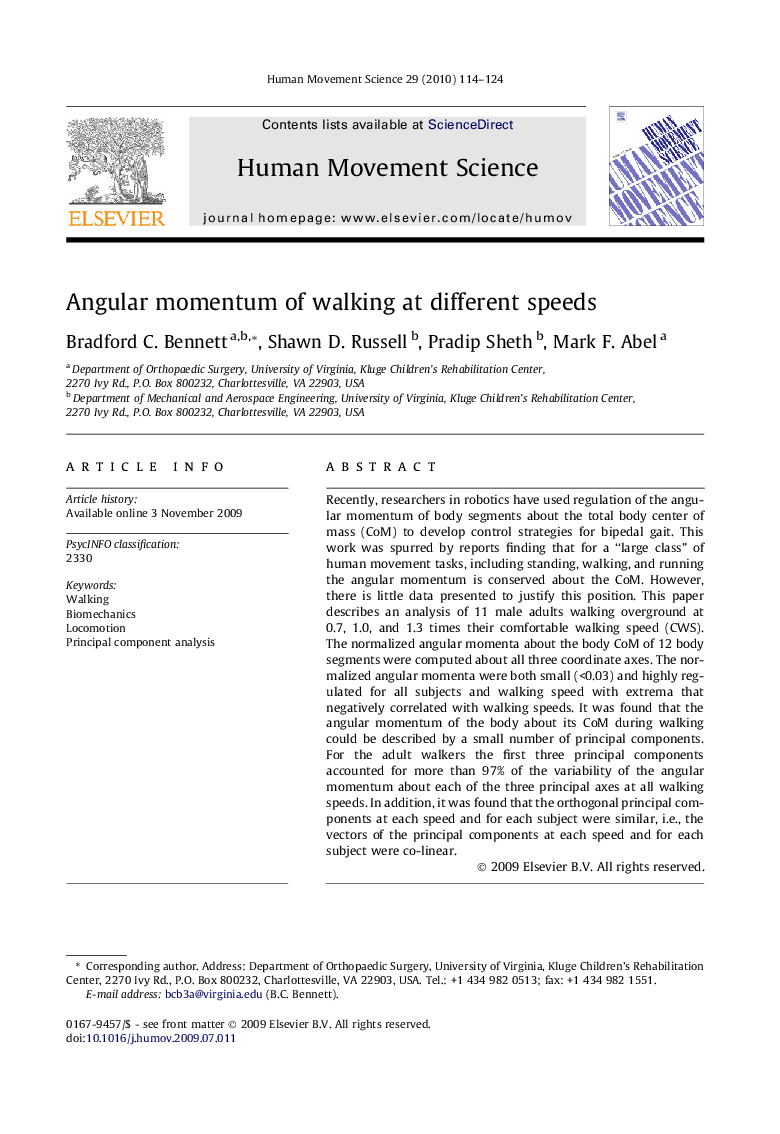| Article ID | Journal | Published Year | Pages | File Type |
|---|---|---|---|---|
| 928745 | Human Movement Science | 2010 | 11 Pages |
Recently, researchers in robotics have used regulation of the angular momentum of body segments about the total body center of mass (CoM) to develop control strategies for bipedal gait. This work was spurred by reports finding that for a “large class” of human movement tasks, including standing, walking, and running the angular momentum is conserved about the CoM. However, there is little data presented to justify this position. This paper describes an analysis of 11 male adults walking overground at 0.7, 1.0, and 1.3 times their comfortable walking speed (CWS). The normalized angular momenta about the body CoM of 12 body segments were computed about all three coordinate axes. The normalized angular momenta were both small (<0.03) and highly regulated for all subjects and walking speed with extrema that negatively correlated with walking speeds. It was found that the angular momentum of the body about its CoM during walking could be described by a small number of principal components. For the adult walkers the first three principal components accounted for more than 97% of the variability of the angular momentum about each of the three principal axes at all walking speeds. In addition, it was found that the orthogonal principal components at each speed and for each subject were similar, i.e., the vectors of the principal components at each speed and for each subject were co-linear.
